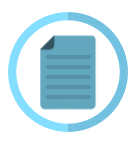Pelatihan Pembuatan Games dengan Scratch Untuk Siswa SMA Wachid Hasyim 5 Surabaya
Abstract
In the increasingly developing digital era, there are several computer skills that high school students must have. One of them is understanding the basics of programming and software development. This service program aims to introduce basic programming concepts and systematic logical thinking to Wachid Hasyim 5 High School students and motivate students to learn computers as a basic skill that must be possessed in the current era by creating game programs with Scratch. The implementation of this training was carried out using a participatory approach where the implementing team provided direct learning and assistance to participants. Mentoring is provided until students can master the material for making games with Scratch. The results of this service program are an increase in students' understanding of the basics of computer programming and an increase in students' skills in creating games with Scratch. This is proven by the post-test results which increased after the training was implemented.
References
V. Ayu, B. Soelitisjanto, H. A. Hernawan, and others, “Pelatihan Pemrograman Visual dengan Scratch untuk Siswa SD Negeri Sawah Panggang,” Jurnal Pengabdian Nasional (JPN) Indonesia, vol. 4, no. 2, pp. 277–283, 2023.
B. Sabella, H. Rhomadhona, and A. R. Arrahimi, “Pelatihan pembuatan game sederhana sebagai media pembelajaran untuk pengajar smp berbasis artificial intelegent,” Jurnal Widya Laksmi: Jurnal Pengabdian Kepada Masyarakat, vol. 3, no. 2, pp. 69–76, 2023.
G. B. Indrawan, I. G. A. Octavia, G. A. A. P. Saputra, I. G. K. Adi, I. G. L. A. Andrayuga, and L. J. E. Dewi, “Pelatihan scratch programming untuk anak-anak SD Umeanyar,” in Unri Conference Series: Community Engagement, 2021, pp. 235–241.
A. Adelia and D. Setiawan, “Pelatihan Pembuatan Game Untuk Siswa Sma Santa Maria 1 Cirebon Menggunakan Aplikasi Scratch,” Aptekmas Jurnal Pengabdian pada Masyarakat, vol. 5, no. 1, pp. 129–135, 2022.
M. Isnaini et al., “Pemanfaatan aplikasi scratch sebagai alternatif media belajar siswa ‘z generation’ untuk guru-guru sdn 1 labuapi,” SELAPARANG: Jurnal Pengabdian Masyarakat Berkemajuan, vol. 5, no. 1, pp. 871–875, 2021.
S. Sutikno, S. Susilo, and W. Hardiyanto, “Pelatihan pemanfaatan scratch sebagai media pembelajaran,” Rekayasa: Jurnal Penerapan Teknologi Dan Pembelajaran, vol. 16, no. 2, pp. 173–178, 2019.
E. Satria, U. S. Sa’ud, C. Riyana, W. Sopandi, and N. Rahmiani, “Pengembangan Meda Pembelajaran Interaktf Untuk Tugas Pemecahan Masalah Pemrograman Pelatihan Berpkr Komputasonal Mahasiswa Dengan Scratch,” Jurnal Elementaria Edukasia, vol. 7, no. 1, pp. 2320–2337, 2024.
E. Satria, H. Hendrizal, D. Daswarman, Y. Nora, and I. R. Jusar, “Pelatihan Pemograman Dengan Aplikasi Scratch Untuk Mengenalkan Keterampilan Berpikir Komputasional Bagi Guru Guru SD di Gugus III Kecamatan Tilatang Kamang,” IKRA-ITH ABDIMAS, vol. 7, no. 3, pp. 91–103, 2023.
A. Rasyad, “MODEL TATA KELOLA PELATIHAN YANG EFEKTIF BERBASIS PENDEKATAN FLEKSIBILITAS, KOLABORATIF, DAN PARTISIPATIF,” Universitas Negeri Malang, Malang, 2021.
D. N. Astrida, F. E. Ramadhan, and T. Widodo, “Pelatihan Programming Junior Pembuatan Game Menggunakan Scratch untuk Sekolah Dasar (SD) Sebagai Upaya Kesiapan Menghadapi Industri Kreatif,” JPMB: Jurnal Pemberdayaan Masyarakat Berkarakter, vol. 3, no. 2, pp. 111–120, 2020.
Copyright (c) 2024 Mamik Usniyah Sari, Isnaini Muhandhis, IM, Nicholas Wijaya, NW, Muhammad Harist Murdani, MHM, Suryo Atmojo, SA, Suzana Dewi, SD, Alven Safik Ritonga, ASR, Nurwahyudi Widhiyanta, NW

This work is licensed under a Creative Commons Attribution-NonCommercial 4.0 International License.
Copyright (c) 2022 DIMASTEK

This work is licensed under a Creative Commons Attribution-NonCommercial 4.0 International License.
Copyright aims to protect the specific way the article has been written to describe an experiment and the results. DIMASTEK is committed to its authors protecting and defending their work and their reputation and takes allegations of infringement, plagiarism, ethical disputes, and fraud very seriously. DIMASTEK is published under the terms of Attribution-NonCommercial 4.0 International (CC BY-NC 4.0). Authors retain the copyright and grant the journal the right of first publication (online) with the work simultaneously. We use the restrictive license (non-commercial) as follows:
- BY (attribution): Users are allowed to share, distribute and redistribute the published article in any medium or format, with an identification of the authors and its initial publication in this journal. Authors are encouraged to post and distribute their articles immediately after publication (e.g., institutional or public repositories, personal websites). Authors are allowed to enter into additional contractual arrangements for the non-exclusive distribution of the published and an acknowledgement of its initial publication in this journal.
- NC (non-commercial): Users are not allowed to use the article commercially without the permission of the authors. Authors agree explicitly that the published article is indexed worldwide in databases, repositories and indexation services, even if these services operate on a commercial basis. Authors grant DIMASTEK explicitly the right to include the published articles in databases, repositories and indexation services. You can see examples of personal and commercial use on this link.











.png)




.png)
.png)
.png)

